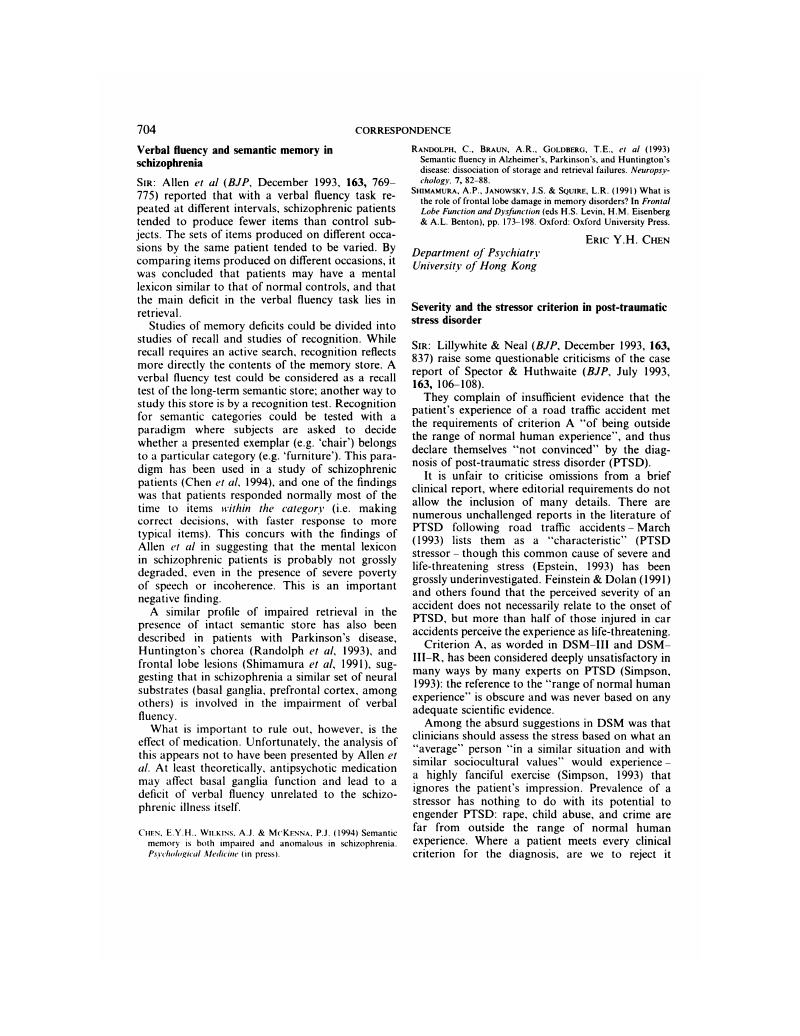No CrossRef data available.
Article contents
Severity and the stressor criterion in post-traumatic stress disorder
Published online by Cambridge University Press: 02 January 2018
Abstract
An abstract is not available for this content so a preview has been provided. As you have access to this content, a full PDF is available via the ‘Save PDF’ action button.

- Type
- Columns
- Information
- Copyright
- Copyright © 1994 The Royal College of Psychiatrists
References
Epstein, R.S. (1993) Avoidant symptoms cloaking the diagnosis of PTSD in patients with severe accidental injury. Journal of Traumatic Stress, 6, 451–458.CrossRefGoogle Scholar
Feinstein, A. & Dolan, R. (1991) Predictors of post-traumatic stress disorder following physical trauma: an examination of the stressor criterion.
Psychological Medicine, 21, 85–91.CrossRefGoogle ScholarPubMed
Foa, E.B., Riggs, D.S., Dancu, C.V.,
et al
(1993) Reliability and validity of a brief instrument for assessing post-traumatic stress disorder.
Journal of Traumatic Stress, 6, 459–473.Google Scholar
March, J.S. (1993) What constitutes a stressor? The “Criterion A” issue. In
Posttraumatic Stress Disorder: DSM–IV & Beyond (eds Davidson, J.R.T. & Foa, E.B.), pp. 37–54. Washington: American Psychiatric Press.Google Scholar
Metter, J. & Michelson, L.K. (1993) Theoretical, clinical, research and ethical constraints of the eye movement desensitization reprocessing technique.
Journal of Traumatic Stress, 6, 413–415.Google Scholar
Simpson, M.A. (1993) Traumatic stress and the bruising of the soul: The effects of torture and coercive interrogation. In
The International Handbook of Traumatic Stress Syndromes (eds Wilson, J.P. & Raphael, B.), pp. 667–684, New York: Plenum Press.CrossRefGoogle Scholar
Weisenberg, M., Solomon, Z., Schwarzwald, J.,
et al
(1987) Assessing the severity of posttraumatic stress disorder: relation between dichotomous and continuous measures.
Journal of Consulting and Clinical Psychology, 55, 432–434.Google Scholar





eLetters
No eLetters have been published for this article.